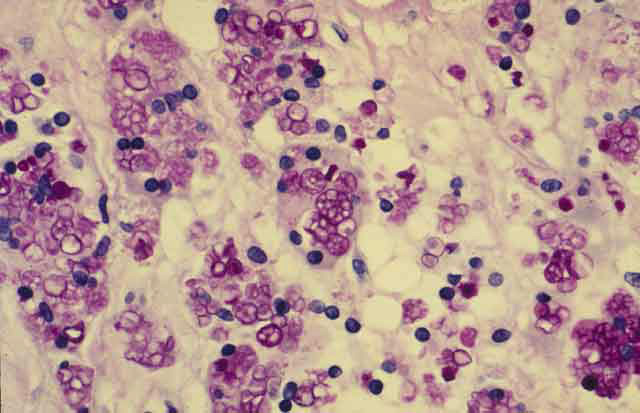Protothecosis is an infection caused by an algae that I may encounter in both my The Woodlands dermatology and Conroe dermatology offices. Prototheca wickerhamiiis the causative algae and can be found worldwide especially in contaminated water or tree slime. In patients with a competent immune system, Protothecosis may occur as an isolated verrucous plaque or nodule on the skin secondary to traumatic inoculation. The skin is the most common site of infection but Protothecosis can also infect the periarticular bursae. Olecranon bursitis is a common infection resulting from Protothecosis, which presents with redness and swelling behind the elbow and pain with movement of the arm. Tenosynovitis can also arise from Protothecosis. In immunocompromised patients, Protothecosis can be fatal as dissemination can occur to the internal organs including the central nervous system and the gastrointestinal tract. Systemic steroid use is the most common predisposing factor for the development of disseminated Protothecosis. Diagnosis is made through culture of the algae or skin biopsy. A characteristic “bucky ball” appearance is seen on histology, in which the sporangia of Protothecosis appears like a morula. Treatment of localized disease is through surgical excision. It is very difficult to treat disseminated Protothecosis as it is an algae and the antifungals are the best alternative antimicrobial since no anti-algae medicines exist. Amphotericin B and the systemic -Azoles have been used with limited success.
November 3, 2010




